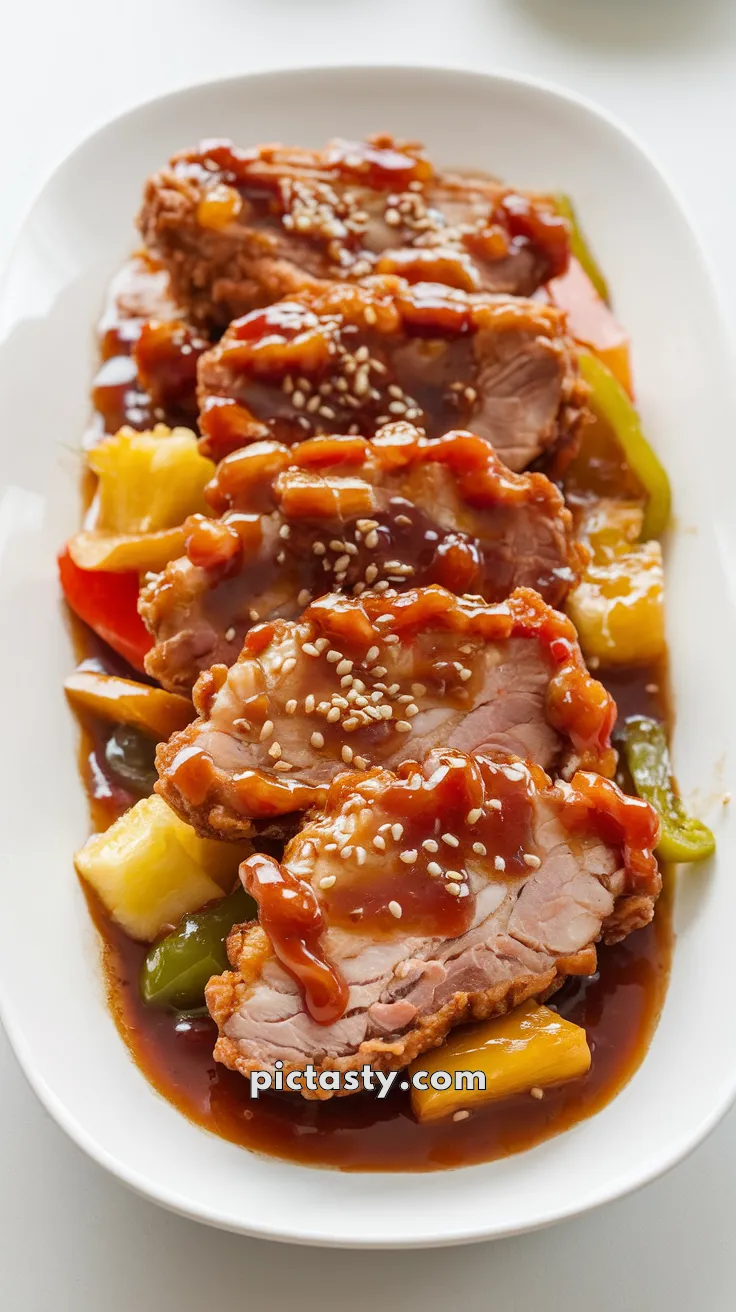Have you ever found yourself craving the delectable flavors of a sweet and sour pork dish you’ve had at a restaurant, only to be disappointed when you can’t replicate it at home? Just like painting a masterpiece, creating the perfect sweet and sour pork requires a balance of ingredients and a touch of culinary acumen.
But fear not, my fellow gastronomes! This recipe will guide you, step by step, in unlocking the secrets to this tantalizing dish. With a harmony of sweet, sour, and savory flavors, your taste buds will be on a rollercoaster ride that you won’t want to end. Ready to embark on this flavorful journey?
The Origin of Sweet and Sour Pork
It’s always interesting to know where our favorite dishes come from. Sweet and sour pork is no exception. It hails from the Chinese province of Guangdong, where it’s known as ‘Gu Lao Rou.’ Over time, it found its way into the hearts and kitchens of food lovers around the world.
While many regions have their own variations, the classic version consists of bite-sized pork pieces, bell peppers, pineapple, and a mouthwatering sweet and sour sauce. It’s this blend of flavors that make this dish an irresistible staple in Chinese cuisine.
Choosing the Right Ingredients
The beauty of cooking lies in the freedom to choose the ingredients that best suit your palate. For sweet and sour pork, it’s essential to choose a cut of pork that’s tender and succulent. Pork shoulder, for instance, is a fantastic choice due to its juicy fat content that renders down beautifully when fried.
As for the sweet and sour sauce, it’s a symphony of flavors—sweetness from sugar, tanginess from vinegar, and a hint of umami from soy sauce. Fresh pineapples and bell peppers add a delightful crunch and burst of freshness to the dish.
The Art of Cooking Sweet and Sour Pork
Creating this dish is like conducting an orchestra—each ingredient playing its part to create a harmonious final product. First, the pork is marinated and coated in a batter before being deep-fried to golden perfection. The vegetables are then stir-fried before the sauce is added and simmered to meld the flavors together.
The final act involves adding the fried pork back into the sauce, allowing it to soak up all the sweet and sour goodness. Serve it over a bed of fluffy steamed rice, and you have a meal that’s both comforting and satisfying.
Ingredients
- 500g pork shoulder, cut into bite-sized pieces
- 1 cup flour for coating
- Oil for deep frying
- 1 bell pepper, diced
- 1 cup pineapple chunks
- 1/2 cup vinegar
- 1/2 cup sugar
- 2 tbsp soy sauce
- 1 tbsp cornstarch, mixed with 2 tbsp of water
- 2 cups steamed rice, for serving
Instructions
- Marinate the pork pieces with salt and pepper for at least 30 minutes.
- Coat the marinated pork with flour and deep fry until golden brown. Set aside.
- In a separate pan, stir fry the bell pepper and pineapple chunks.
- Add the vinegar, sugar, and soy sauce to the pan. Once the sugar dissolves, stir in the cornstarch mixture to thicken the sauce.
- Add the fried pork to the sauce and stir until well coated. Let it simmer for a few minutes.
- Serve the sweet and sour pork over steamed rice. Enjoy!
Cook and Prep Times
- Prep Time: 45 minutes
- Cook Time: 15 minutes
Tips for Sweet And Sour Pork
Always marinate the pork for at least 30 minutes to enhance its flavor. When deep frying the pork, make sure the oil is hot enough before adding the pork to achieve a crispy texture. Lastly, don’t overcook the vegetables – they should remain slightly crisp to provide a contrast to the tender pork.
Why This Recipe is a Must-Try
This sweet and sour pork recipe perfectly embodies the harmony of flavors that Chinese cuisine is known for. The perfect balance of sweet and sour, the crunch from the vegetables, and the succulent pork create a meal that’s not just delicious, but also comforting and satisfying. Once you’ve tried this recipe, you’ll never look at take-out the same way again!
Nutrition Information
- Calories: 480 kcal
- Total Fat: 16g
- Cholesterol: 70mg
- Sodium: 660mg
- Carbohydrate: 58g
- Fiber: 2g
- Sugar: 25g
- Protein: 28g

